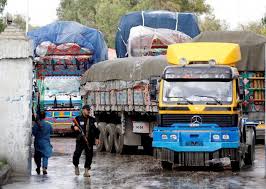Business in Afghanistan and what is the reason for the lack of business development in Afghanistan?

Trade is one of the key factors for economic growth and development in any country, but in Afghanistan, trade has faced many challenges and has not been developed enough. Despite Afghanistan’s strategic position as a bridge between Central Asia, South Asia, and the Middle East, this country has not been able to fully exploit these capacities for trade development.
Reasons for non-development of trade in Afghanistan:
-
Political insecurity and instability:
Political insecurity and instability is one of the main obstacles to business development in Afghanistan. Continuous wars and conflicts, especially in the last two decades, have reduced the confidence of investors and businessmen in Afghanistan’s economic environment. Security instability also disrupts roads, transport routes, and supply of goods. -
weak infrastructures:
- One of the biggest challenges of doing business in Afghanistan is the weak infrastructure in the fields of transportation, energy, and communication. Many roads and trade routes are in poor condition, and the lack of efficient rail lines and international transportation systems makes exporting and importing expensive and time-consuming. Also, the lack of electricity and sustainable energy hinders the development of production and industrial units.
-
Border restrictions and foreign communications:
- As a landlocked country (without access to the sea), Afghanistan depends on its neighbors for its foreign trade. Border restrictions and diplomatic problems with some of these countries, such as Pakistan and Iran, have hampered foreign trade. Frequent border closures, high customs tariffs, and unfair trade policies pose serious barriers to trade.
-
Lack of access to financial resources and credit:
- Another major problem for Afghan businessmen is limited access to financial resources, loans, and bank credit. The lack of an efficient banking system and the lack of investments, especially from the private sector, have limited the growth of business. Banks in Afghanistan are often unable to provide large commercial loans, and interest rates are high.
-
Lack of diversity in production and export:
- Afghanistan is mainly an agricultural economy and its export sector is limited to primary products such as dried fruits, saffron, and handwoven carpets. The lack of diversity in export products, as well as the absence of processing industries and value-added products, has led to a decrease in Afghanistan’s competitiveness in global markets.

- Afghanistan is mainly an agricultural economy and its export sector is limited to primary products such as dried fruits, saffron, and handwoven carpets. The lack of diversity in export products, as well as the absence of processing industries and value-added products, has led to a decrease in Afghanistan’s competitiveness in global markets.
-
Widespread corruption:
- Administrative corruption is one of the biggest business problems in Afghanistan. Merchants face bribery, blackmail, and administrative delays that increase business costs and disrupt business processes. This problem reduces the trust of businessmen in government institutions and commercial institutions.
-
Unsustainable business policies:
- Frequent changes in business policies and lack of stability in business laws and regulations have caused confusion for traders and investors. The unpredictability of business and tax policies has caused business in Afghanistan to be associated with many risks.
-
Lack of training and specialized skills:
- Businessmen and economic activists in Afghanistan often face problems in managing and developing their businesses due to the lack of specialized training and access to new technologies. The lack of access to knowledge and skills related to international trade and human and financial resource management has hindered the growth of new businesses and businesses.
Suggested solutions for business development in Afghanistan:
-
Improving security and political stability:
- Political security and stability is the most basic condition for business development. Improving security conditions and reducing conflicts can help attract foreign investments and increase the confidence of domestic businessmen.
-
Investment in infrastructure:
- Investments in transportation, energy, and communication infrastructures facilitate improved conditions for international and domestic trade. Improving roads, building rail lines, and upgrading dry ports can reduce trade costs and create new opportunities for traders.
-
Development of industrial and production sectors:
- Focusing on the development of manufacturing industries and processing of agricultural products can create added value and remove Afghanistan’s economy from dependence on the export of raw materials. Creating conversion industries to process agricultural products can diversify the country’s exports and earn more currency.
-
Fighting corruption:
- Implementation of effective policies to fight against administrative corruption and create transparency in business and government systems can lead to increasing the confidence of businessmen and investors and reduce additional costs.
-
Reforms in the banking and financial system:
- It is necessary to reform and strengthen the banking system of Afghanistan to provide financial facilities and credit to traders and businesses. Establishing specialized banks to finance trade and provide low-interest loans to traders can boost domestic and international trade.
-
Expansion of international trade agreements:
- Afghanistan should seek to expand bilateral and multilateral trade agreements with neighboring countries and other countries. These agreements can help reduce trade tariffs and border barriers and open new markets for Afghanistan’s exports.
Conclusion:
Trade can act as an engine for Afghanistan’s economic growth, but to achieve this goal, existing challenges such as insecurity, poor infrastructure, corruption, and lack of export diversification must be addressed. By investing in infrastructure, improving security conditions, and providing financial facilities to businessmen, Afghanistan can exploit its business potential and achieve sustainable economic development.